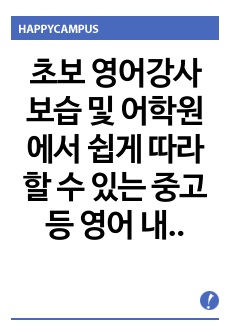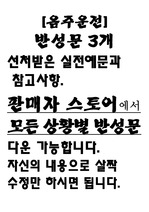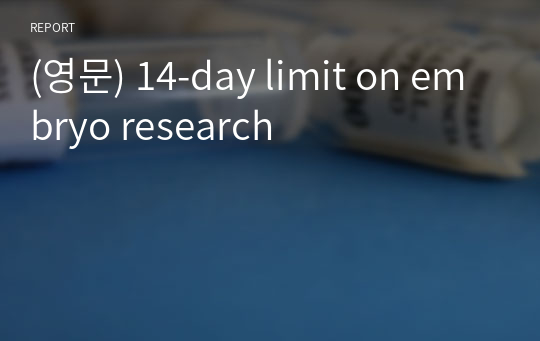(영문) 14-day limit on embryo research
골드문트
다운로드
장바구니
소개글
"14-day limit on embryo research"에 대한 내용입니다.목차
1. Introduction2. Human embryos in vitro and the 14-day rule
3. Moral status of embryos
4. Slippery slope
5. Benefits of extended embryo research – utilitarian point of view
6. Conclusion
본문내용
The 14-day rule, proposed in the Warnock Report in 1984,1 has been widely accepted as the standard regulation which restricts the duration for in vitro embryo research since it was first introduced. With rapid advancement in biomedical science, however, experts from interdisciplinary fields have begun to question whether this nearly 40-year-old rule still serves science and society in an optimal way, and some call for a regulatory reform which may further amplify the clinical advantages from embryo research.In this paper, I will critically analyse how therapeutic benefits from extended embryo research exceed the significance purportedly enshrined in the moral status of the developing embryo. I will start by outlining the emergence of the 14-day rule with regard to embryo research, then briefly present the recent breakthroughs which raised the possibility of the revision to this rule. I then will scrutinise how the alleged moral status of..
<중 략>
참고 자료
Beauchamp TL and Childress JF, Principles of Biomedical Ethics (5th edn, Oxford University Press 2001)Dawson K, ‘Segmentation and moral status: A scientific perspective’ in P Singer, H
Kuhse, S Buckle, K Dawson and P Kasimba (eds), Embryo Experimentation (Cambridge University Press, 1990)
Department of Health & Social Security, Report of the Committee of Inquiry into Human Fertilisation and Embryology (Cmnd.9384) (Department of Health & Social Security 1984)
Department of Health and Social Security, Written evidence to the inquiry and responses to the report on human fertilisation & embryology. (Warnock report) 1985
(National Children’s Home, House of Commons Library Dep 1497 1985)
Harris J, Enhancing evolution: The ethical case for making better people (Princeton University Press 2007)
Lee D, Handbook of Digital Currency : Bitcoin, Innovation, Financial Instruments, and Big Data (Elsevier Science & Technology, 2015)
McMillan C, 'When Is Human? Rethinking the Fourteen-Day Rule', in Laurie G, Dove
E, Ganguli-Mitra A, McMillan C, Postan E, Sethi N and Sorbie A (eds), The Cambridge Handbook of Health Research Regulation (Cambridge University Press 2021)
Nuffield Council on Bioethics, Human embryo culture (Nuffield Council on Bioethics 2017)
Zaky S, Zaky CS, and Abd-Elsayed A, ‘Anatomy of the nervous system’ in AbdElsayed A (ed) Pain: a Review Guide (Springer 2019)
Appleby JB and Bredenoord AL, ‘Should the 14-day rule for embryo research become the 28-day rule?’ (2018) 10 EMBO Molecular Medicine
<https://www.embopress.org/doi/full/10.15252/emmm.201809437> accessed on 29 November 2022
Blackshaw BP and Rodger D, ‘Why we should not extend the 14-day rule’ (2021) 47 Journal of Medical Ethics 712
Castelyn G, ‘Embryo experimentation: is there a case for moving beyond the ‘14‑day rule’ (2020) 38 Monash Bioethics Review 181
Cavaliere G, ‘A 14-day limit for bioethics: the debate over human embryo research’ (2017) 18 BMC Medical Ethics
<https://bmcmedethics.biomedcentral.com/articles/10.1186/s12910-017-0198-5> accessed 18 December 2022
Chan S, ‘How and Why to Replace the 14-Day Rule’ (2018) 4 Current Stem Cell Report 228
Deglincerti A and others, ‘Self-organization of the in vitro attached human embryo’ (2016) 533 Nature 251
FitzPatrick WJ, ‘Totipotency and the Moral Status of Embryos: New Problems for an Old Argument’ (2004) 35 Journal of Social Philosophy 108
Hammond-Browning N, ‘Ethics, embryos, and evidence: A look back at Warnock’ (2015) 23 Medical Law Review 588
Hurlbut JB and others, ‘Revisiting the Warnock rule’ (2017) 35 Nature Biotechnology 1029
Hyun I and others, ‘Human embryo research beyond the primitive streak’ (2021) 371 Science 998
Hyun I, Wilkerson A, and Johnston J, ‘Revisit the 14-Day Rule’ (2016) 533 Nature 169
Koch R, ‘Conjoined Twins and the Biological Account of Personal Identity’ (2006) 89 The Monist 351
Matthews KRM and Morali D, ‘National human embryo and embryoid research policies: a survey of 22 top research-intensive countries’ (2020) 15 Regenerative Medicine 1905
McCully S, ‘The time has come to extend the 14-day limit’ (2021) 47 Journal of Medical Ethics <https://jme.bmj.com/content/47/12/e66> accessed 15 December 2022
Ma H and others, ‘In vitro culture of cynomolgus monkey embryos beyond early gastrulation’ (2019) 366 Science
<https://www.science.org/doi/10.1126/science.aax7890> accessed 14 January 2023
Niu Y and others, ‘Dissecting primate early post-implantation development using long-term in vitro embryo culture’ (2019) 366 Science
<https://www.science.org/doi/10.1126/science.aaw5754> accessed 14 January 2023
Prior M and others, ‘Priorities for research in miscarriage: a priority setting partnership between people affected by miscarriage and professionals following the James Lind Alliance methodology’ (2017) 7 BMJ Open <https://bmjopen.bmj.com/content/7/8/e016571> accessed 14 January 2023
Robertson JA, ‘Procreative Liberty and the Control of Conception, Pregnancy, and Childbirth’ (1983) 69 Virginia Law Review 405
Shahbazi MN and others, ‘Self-organization of the human embryo in the absence of maternal tissues’ (2016) 18 Nature Cell Biology 700
Stier M and Schoene-Seifert B, ‘The Argument from Potentiality in the Embryo Protection Debate: Finally “Depotentialized”?’ (2013) 13 The American Journal of Bioethics 19
Warnock M, ‘Moral Thinking and Government Policy: The Warnock Committee on Human Embryology.’ (1985) 63 The Milbank Memorial Fund Quarterly Health and Society 504
Warnock M, ‘The ethical regulation of science’ (2007) 450 Nature 615
Warnock M, ‘The Warnock Report’ (1985) 291 British Medical Journal 187
Human Fertilisation and Embryology Act 1990
Representation of the People Act 2000
BBC, ‘What is Bitcoin? An eight-step guide to the cryptocurrency’ (BBC Bitesize, July 2020) <https://www.bbc.co.uk/bitesize/articles/zfsvy9q> accessed 8 January 2023
Harris J, ‘It’s time to extend the 14-day limit for embryo research’ (The Guardian, 6 May 2016) < https://www.theguardian.com/commentisfree/2016/may/06/extend-14-day-limit-embryo-research> accessed 23 December 2022
Tidy J, ‘Bitcoin: Will El Salvador's big crypto gamble pay off?’ (BBC News, 16 June 2022) <https://www.bbc.com/news/technology-61813845> accessed on 8 January 2023
Warnock M, ‘Should the 14-day limit on human embryo research be extended?’ (The Progress Educational Trust, 9 January 2017) <https://www.progress.org.uk/shouldthe-14-day-limit-on-human-embryo-research-be-extended/> accessed 3 January 2023


























